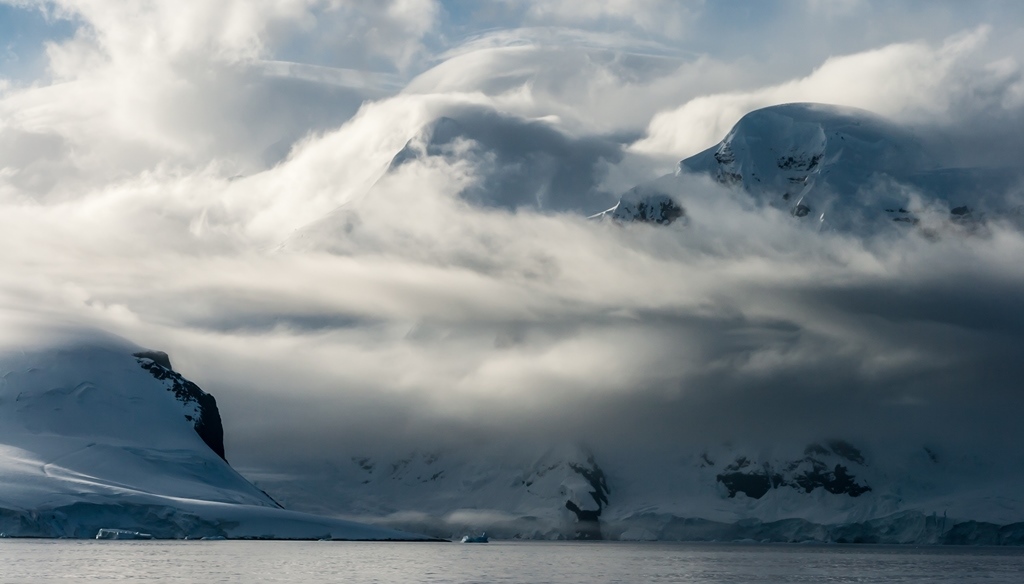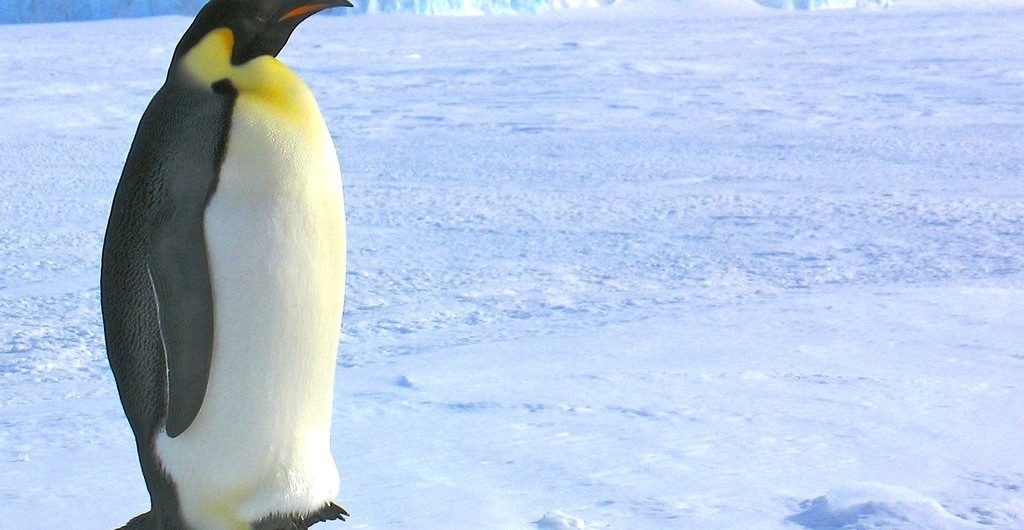- Older than you know! – Research shows that Antarctica has existed for over 200 million years! Back all those aeons ago, it was joined with Australia, Africa, South America, India and New Zealand, in the supercontinent Gondwana. Then around 40 million years ago, it made its final disengagement from the Australian continent, settled into its present polar position, and began to cool dramatically.
Watch this amazing video to know what life’s like on the coldest place on the planet!
Cloud Filled Mountains of the Neuymayer Channel in Antarctica - A bit of history – Antarctica was discovered in 1820 by a Russian team but it took almost 100 years before further serious expeditions were undertaken. In the 1890s, John George Bartholomew, a Scottish cartographer, became the first person to formally use “Antarctica” as a name for the continent. Translated literally, Antarctica means “opposite the bear” (from the Great Bear, or Ursa Major, above the North Pole) or “opposite to the Arctic”.
- Coldest place on the planet – Antarctica is the world’s highest, driest and coldest continent, with an annual mean temperature of -55°C. It was at Russia’s Vostok Station, in Antarctica, that earth’s lowest ever temperature ever, -89.2°C, was recorded, on 21st July, 1983.
- Ice Ice baby –
The ice sheet in Antarctica is 4,776 metres deep at its thickest point, with an average thickness of 2,160 metres. This is 90 percent of the world’s entire ice, and 70 percent of the world’s total freshwater. There is about eight times as much ice in Antarctica as there is in the Arctic. If all this ice were to melt (let’s hope for everyone’s sake that it doesn’t!), ocean levels across the world would rise by 200-210 feet.

Ice Shelf



